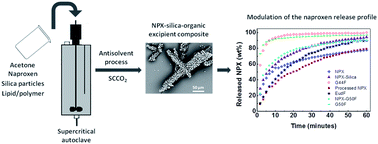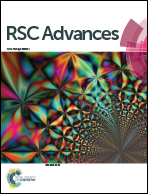Preparation and study of naproxen in silica and lipid/polymer hybrid composites
Abstract
Three different powdered hybrid inorganic–organic composites for pharmaceutical use have been successfully obtained using CO2 as an antisolvent in a batch mode process. Naproxen was chosen as the hydrophobic Class II model drug, for which its dissolution rate in water must be enhanced. As excipients, two kind of commercial lipids (G44/14 and G50/13) and a mixture of Eudragit RS100 and Eudragit RL100 polymers were used. Silica microparticles have also been incorporated into the formulation to restrict the naproxen crystals growth and to obtain a powdered material with appropriate micromeritic properties. The morpho-chemical characteristics of these microcomposites and their different release profiles are reported. Importantly, the components have not suffered structural or chemical modifications during the processing and no specific chemical bonds were detected between them. High drug loading has been achieved in the three cases. Water dissolution of the drug formulations is controlled mainly by the wetting properties and nature of the excipients and by the size of the crystals. Among the materials prepared, samples made with Gelucires (hydrophilic species) result in the fastest release of naproxen. We thus conclude that lipid-based ternary formulations display a synergetically accelerated release compared to binary mixtures.


 Please wait while we load your content...
Please wait while we load your content...